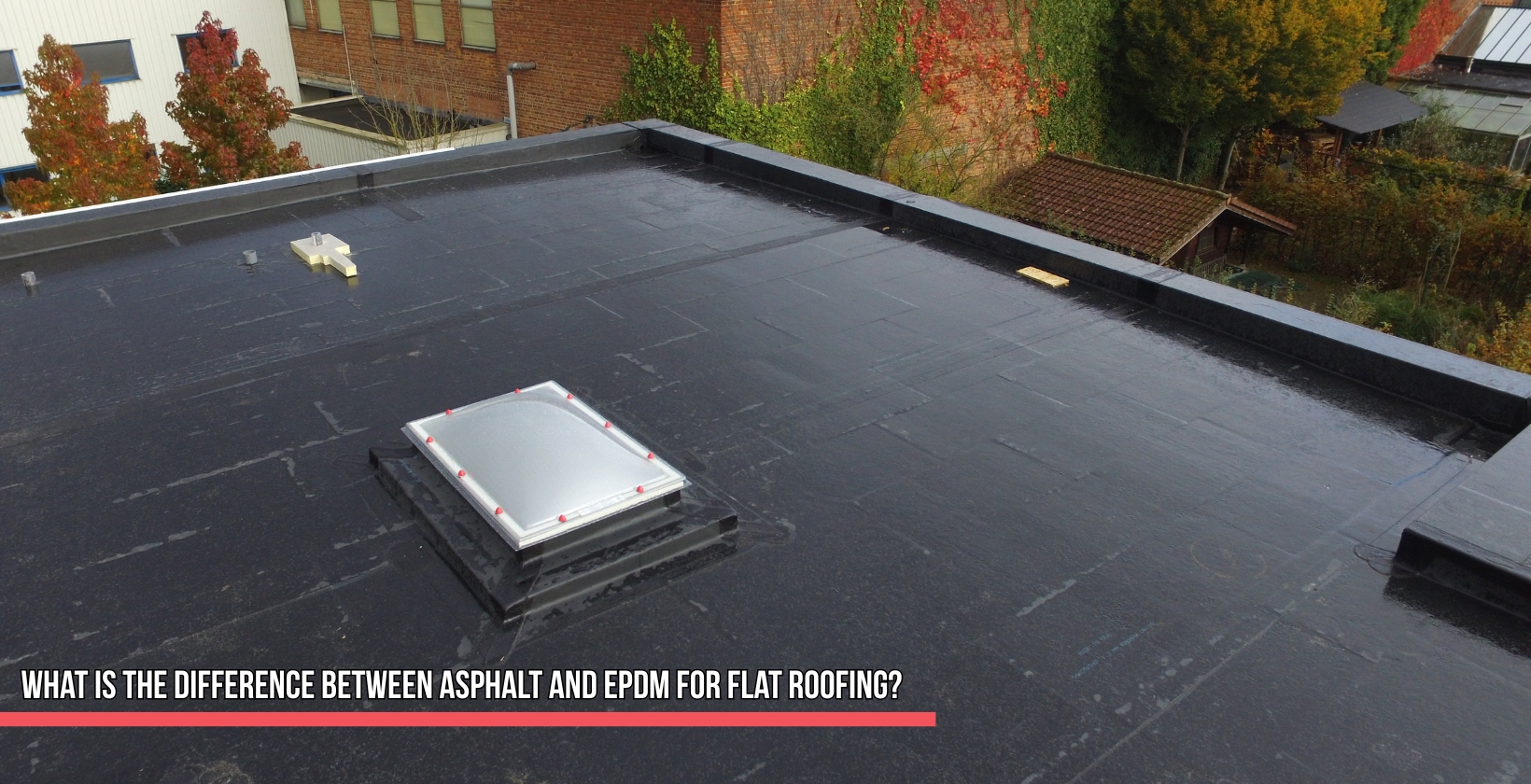
Flat roofs are common in the UK for both homes and commercial buildings. Two materials often used for these roofs are asphalt and EPDM. Both protect buildings from the weather but work in different ways. Knowing how they compare helps you make the right choice for your roof. To begin, it helps to understand what each material is.
Asphalt roofing uses layers of bitumen and felt or fibreglass. These layers are rolled out and fixed to the roof surface using heat or adhesives. The surface can be left smooth or covered with gravel to protect it from the sun. Asphalt has been used for flat roofs for many years and is well known in the UK. However, EPDM has become a strong alternative worth considering in recent years.
EPDM stands for Ethylene Propylene Diene Monomer, a type of rubber. It comes in large sheets rolled out and glued to the roof surface. EPDM is lightweight, flexible, and often quicker to install than asphalt. Many people choose EPDM because it lasts long and handles weather well. To understand that better, it helps to compare how long each material lasts.
EPDM usually lasts longer than asphalt. A well-installed EPDM roof can last 25 to 30 years or more. Asphalt roofs tend to last around 15 to 20 years, depending on the quality of materials and upkeep. Over time, asphalt can crack or wear down, especially in hot or wet weather. Aside from lifespan, weather resistance is another key factor to consider.
Both materials are made to keep out rain and resist water damage. EPDM handles temperature changes better because it stays flexible. Asphalt is waterproof but may become brittle, especially if exposed to strong sunlight. EPDM performs well in both cold and warm conditions. However, durability can also depend on how the roof is used, especially if walked on regularly.
Asphalt has a hard surface that can withstand foot traffic. This makes it useful if people need to walk on the roof, for example, during repairs. EPDM can tear more easily if not protected, though thicker grades are stronger. You can use mats or walkways on EPDM roofs to reduce wear. At the same time, surface strength matters, and the ease of installation is another point worth comparing.
EPDM is often easier and quicker to install because it comes in large rolls. It is glued down and doesn’t always need heat, which makes it safer and simpler. Asphalt takes longer and often needs specialist tools and heating equipment, making the job more time-consuming and complex. Once installed, though, each material has different maintenance needs.
EPDM roofs usually need less care once installed. They resist cracking and hold up well without much attention. Asphalt roofs may need more checks, especially for cracks or loose areas. Cleaning debris from the surface and checking for leaks are important for both types. Still, the total cost of each option can play a big part in the decision.
Asphalt roofing usually costs less to install at first. EPDM is more expensive due to the material and ease of fitting. However, because EPDM lasts longer and needs fewer repairs, it may be cheaper in the long run. Asphalt may need replacing sooner, which adds to total costs over time. Beyond cost, appearance may also influence your decision.
Asphalt roofs often have a rough, textured look, especially if gravel is added. EPDM roofs have a smooth, rubbery finish and are usually black or dark grey. Some people prefer the neat look of EPDM, especially for modern buildings. Others may not mind the more traditional feel of asphalt. Whichever style you choose, it should also suit the type of building you’re working on.
Both materials are used in homes, garages, and larger buildings. EPDM roofs are especially common for new builds and extensions due to their long life, flexibility, and ease of installation. Asphalt is still popular on older properties and flat roofs requiring extra strength. Local weather, building size, and roof use can all affect the choice. If you’re thinking about sustainability, the environmental impact might also be a factor.
Which Flat Roofing Option Is Better for the Environment?
EPDM is often considered more eco-friendly because it lasts longer and is recyclable. It also doesn’t use heat during fitting, which reduces energy use. Asphalt uses more energy during installation and is harder to recycle. However, some types of asphalt now include recycled content. You’ll need to weigh these points together to make the best choice.
Consider your budget, how long you want the roof to last, and how it will be used. Asphalt is better if the roof is strong and is walked on often. EPDM is a good pick if you want something low-maintenance and long-lasting. You should also consider local weather and whether appearance matters to you. For example, flat roofs near Newcastle Quayside may require extra attention to waterproofing and durability due to exposure to wind and moisture. Once you’ve thought it through, you’ll be ready to choose what works best for you.
What’s the Best Choice for Your Flat Roofing Needs?
Both asphalt and EPDM offer solid options for flat roofing. EPDM lasts longer and needs less maintenance, while asphalt can handle heavier use. Your choice depends on what matters most: budget, looks, or ease of care. Either material can serve you well with the right installer and proper upkeep. For lasting results, investing in a professional flat roof installation ensures your chosen material performs at its best and stands up to the UK’s demanding weather.
© Copyright 2025 Newcastle Flat Roofing